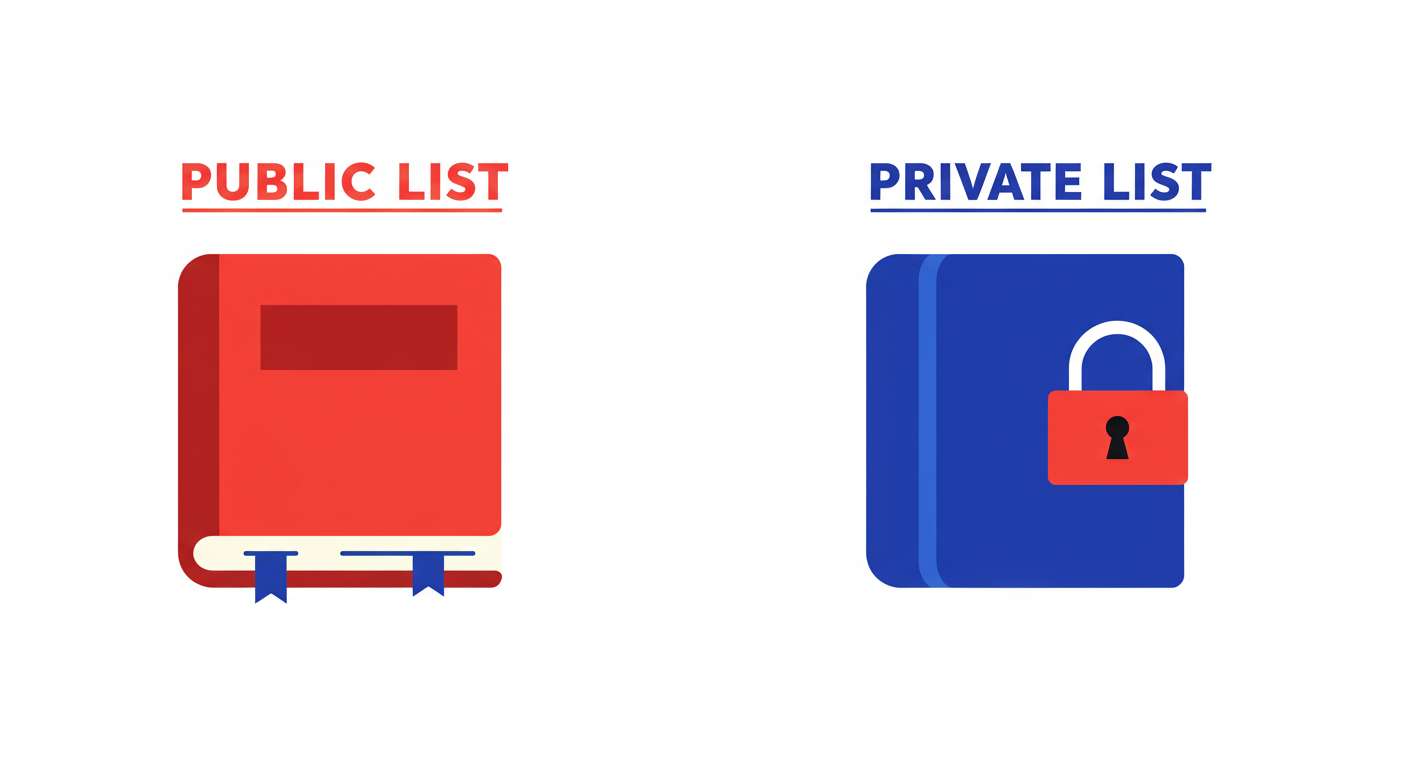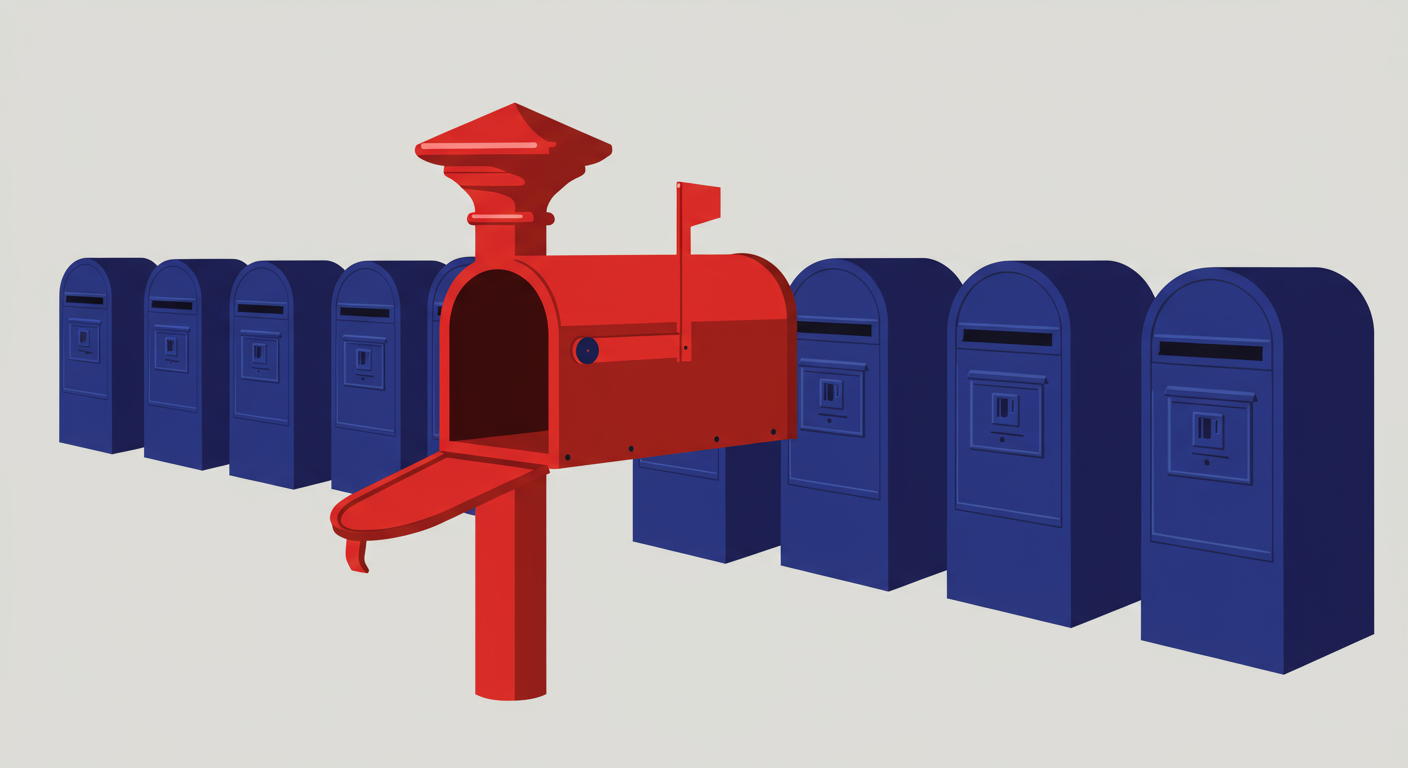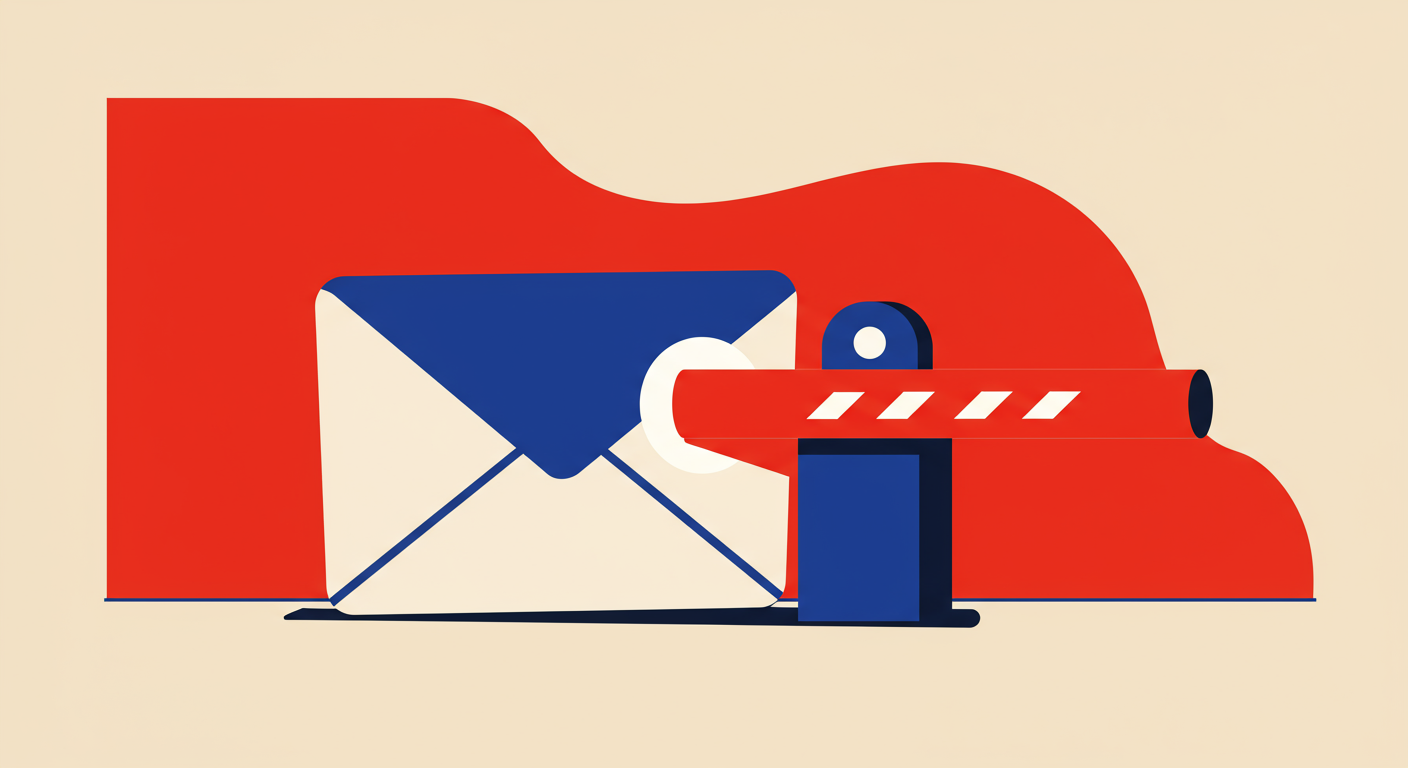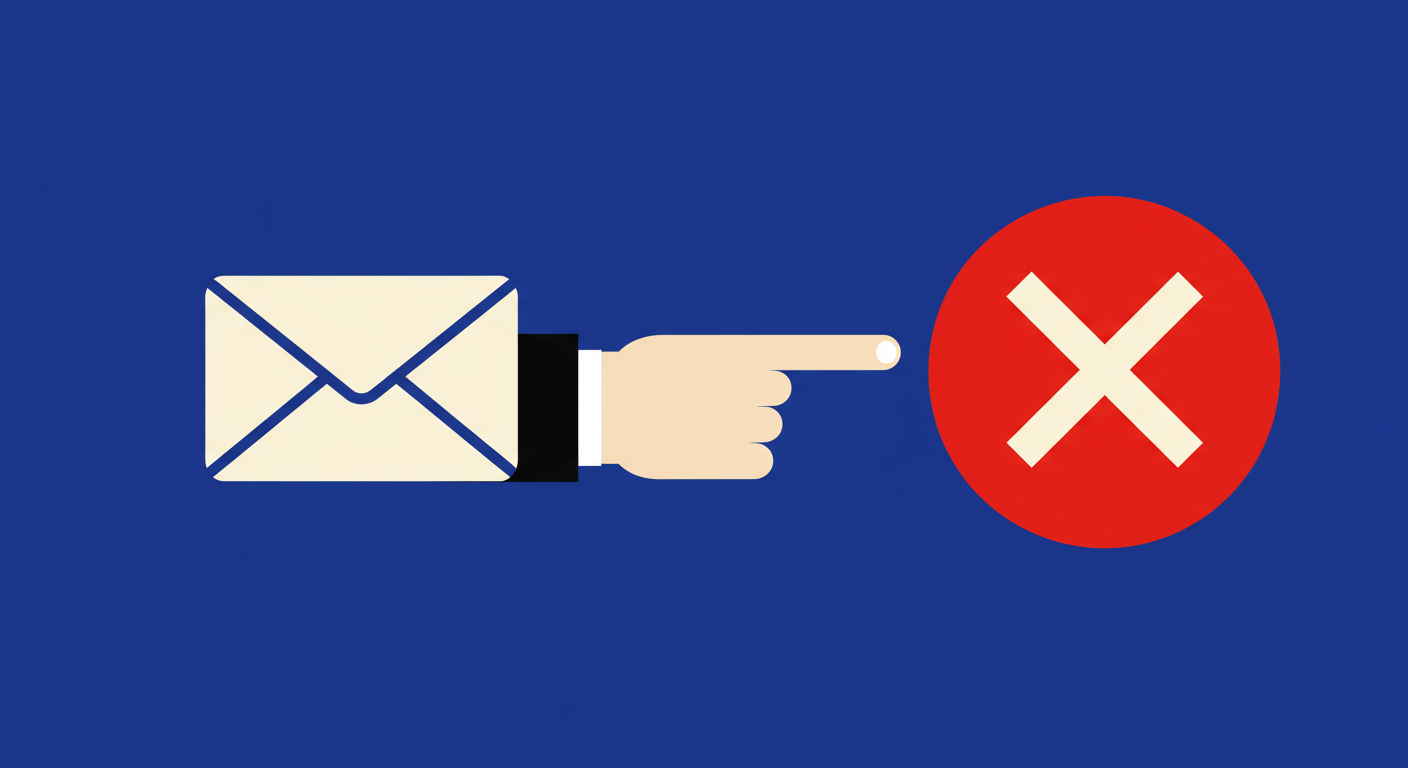Public vs private blacklists: what's the difference?



When you send an email, you're not just firing it into the void. It passes through a series of checkpoints, and one of the most significant is the blocklist check. Think of email blocklists, sometimes called blacklists, as a crucial part of the internet's immune system. They are real-time databases designed to identify and filter out sources of spam and malicious mail, protecting inboxes around the world.
But here's where it gets interesting for senders- not all blocklists are the same. In my years specializing in email deliverability, I've seen countless businesses get tripped up by this. They fall into two main categories: public and private. The difference between them is vast, and understanding it is fundamental to diagnosing why your emails might not be reaching the inbox.
Ignoring this distinction is like a doctor trying to treat a patient without knowing the difference between a common cold and pneumonia. Both cause a cough, but the treatment is worlds apart. Similarly, getting on a public blacklist requires a different remedy than getting on a private one. Let's break down what each one is and what it means for you.
Public blocklists are exactly what they sound like- they are publicly accessible databases of IP addresses and domains that have been flagged for sending spam. Organizations like Spamhaus, SpamCop, and SURBL run some of the most well-known lists. Mail server administrators all over the world can choose to use these lists to filter their incoming mail. If your sending IP or domain is on one of these lists, any server using it will likely reject your email outright.
The great thing about public blocklists is their transparency. Because the information is public, you can check them to see if you've been listed. This transparency is a massive advantage because it gives you a clear starting point for fixing the problem. You know who listed you and, usually, why they listed you. It removes a lot of the guesswork from deliverability troubleshooting.
You can use the tool below to see if your domain is listed on any of the major public blocklists. This is often the first step I recommend when someone comes to me with a sudden drop in email delivery.
 Spamhaus
Spamhaus 0Spam
0Spam Cisco
Cisco NoSolicitado
NoSolicitado URIBL
URIBL abuse.ro
abuse.ro ALPHANET
ALPHANET Anonmails
Anonmails Ascams
Ascams BLOCKEDSERVERS
BLOCKEDSERVERS Calivent Networks
Calivent Networks EFnet
EFnet
 JustSpam
JustSpam Kempt.net
Kempt.net
 NordSpam
NordSpam RV-SOFT Technology
RV-SOFT Technology
 Scientific Spam
Scientific Spam Spamikaze
Spamikaze SpamRATS
SpamRATS SPFBL
SPFBL Suomispam
Suomispam System 5 Hosting
System 5 Hosting Team Cymru
Team Cymru Validity
Validity www.blocklist.de Fail2Ban-Reporting Service
www.blocklist.de Fail2Ban-Reporting Service ZapBL
ZapBL 2stepback.dk
2stepback.dk Fayntic Services
Fayntic Services ORB UK
ORB UK technoirc.org
technoirc.org TechTheft
TechTheft Spamhaus
Spamhaus 0Spam
0Spam Cisco
Cisco NoSolicitado
NoSolicitado URIBL
URIBL abuse.ro
abuse.ro ALPHANET
ALPHANET Anonmails
Anonmails Ascams
Ascams BLOCKEDSERVERS
BLOCKEDSERVERS Calivent Networks
Calivent Networks EFnet
EFnet
 JustSpam
JustSpam Kempt.net
Kempt.net
 NordSpam
NordSpam RV-SOFT Technology
RV-SOFT Technology
 Scientific Spam
Scientific Spam Spamikaze
Spamikaze SpamRATS
SpamRATS SPFBL
SPFBL Suomispam
Suomispam System 5 Hosting
System 5 Hosting Team Cymru
Team Cymru Validity
Validity www.blocklist.de Fail2Ban-Reporting Service
www.blocklist.de Fail2Ban-Reporting Service ZapBL
ZapBL 2stepback.dk
2stepback.dk Fayntic Services
Fayntic Services ORB UK
ORB UK technoirc.org
technoirc.org TechTheft
TechTheft Spamhaus
Spamhaus 0Spam
0Spam Cisco
Cisco NoSolicitado
NoSolicitado URIBL
URIBL abuse.ro
abuse.ro ALPHANET
ALPHANET Anonmails
Anonmails Ascams
Ascams BLOCKEDSERVERS
BLOCKEDSERVERS Calivent Networks
Calivent Networks EFnet
EFnet
 JustSpam
JustSpam Kempt.net
Kempt.net
 NordSpam
NordSpam RV-SOFT Technology
RV-SOFT Technology
 Scientific Spam
Scientific Spam Spamikaze
Spamikaze SpamRATS
SpamRATS SPFBL
SPFBL Suomispam
Suomispam System 5 Hosting
System 5 Hosting Team Cymru
Team Cymru Validity
Validity www.blocklist.de Fail2Ban-Reporting Service
www.blocklist.de Fail2Ban-Reporting Service ZapBL
ZapBL 2stepback.dk
2stepback.dk Fayntic Services
Fayntic Services ORB UK
ORB UK technoirc.org
technoirc.org TechTheft
TechTheft Spamhaus
Spamhaus 0Spam
0Spam Cisco
Cisco NoSolicitado
NoSolicitado URIBL
URIBL abuse.ro
abuse.ro ALPHANET
ALPHANET Anonmails
Anonmails Ascams
Ascams BLOCKEDSERVERS
BLOCKEDSERVERS Calivent Networks
Calivent Networks EFnet
EFnet
 JustSpam
JustSpam Kempt.net
Kempt.net
 NordSpam
NordSpam RV-SOFT Technology
RV-SOFT Technology
 Scientific Spam
Scientific Spam Spamikaze
Spamikaze SpamRATS
SpamRATS SPFBL
SPFBL Suomispam
Suomispam System 5 Hosting
System 5 Hosting Team Cymru
Team Cymru Validity
Validity www.blocklist.de Fail2Ban-Reporting Service
www.blocklist.de Fail2Ban-Reporting Service ZapBL
ZapBL 2stepback.dk
2stepback.dk Fayntic Services
Fayntic Services ORB UK
ORB UK technoirc.org
technoirc.org TechTheft
TechTheft Spamhaus
Spamhaus 0Spam
0Spam Cisco
Cisco NoSolicitado
NoSolicitado URIBL
URIBL abuse.ro
abuse.ro ALPHANET
ALPHANET Anonmails
Anonmails Ascams
Ascams BLOCKEDSERVERS
BLOCKEDSERVERS Calivent Networks
Calivent Networks EFnet
EFnet
 JustSpam
JustSpam Kempt.net
Kempt.net
 NordSpam
NordSpam RV-SOFT Technology
RV-SOFT Technology
 Scientific Spam
Scientific Spam Spamikaze
Spamikaze SpamRATS
SpamRATS SPFBL
SPFBL Suomispam
Suomispam System 5 Hosting
System 5 Hosting Team Cymru
Team Cymru Validity
Validity www.blocklist.de Fail2Ban-Reporting Service
www.blocklist.de Fail2Ban-Reporting Service ZapBL
ZapBL 2stepback.dk
2stepback.dk Fayntic Services
Fayntic Services ORB UK
ORB UK technoirc.org
technoirc.org TechTheft
TechTheft
This is where things get more complicated. The world's largest mailbox providers, such as Google (Gmail), Microsoft (Outlook), and Yahoo, all maintain their own internal, private blocklists. These are not public-facing databases. You can't just visit a website and check if your domain is on Gmail's private blacklist. These lists are their own proprietary, highly-guarded secret sauce for fighting spam.
These providers have access to a staggering amount of data. They see how billions of users interact with trillions of emails every year. They use this data, combined with sophisticated machine learning, to build their own internal reputation systems and blocklists. These systems are often more dynamic and nuanced than public ones, reacting in real-time to new threats and sender behaviors.
The only way to know you're on a private blocklist is through observation and inference. If you notice that your emails are being delivered perfectly everywhere except to Gmail addresses, where they are either disappearing or landing in the spam folder, it's a strong indicator that you have a reputation problem with Google. The issue is localized to that specific provider, which points directly to their internal filtering and blocklisting mechanisms.

Whether public or private, the reasons for getting blacklisted are largely the same. It almost always boils down to poor sending practices and a lack of email hygiene. Mailbox providers and blocklist operators are looking for signals that you're sending mail that people don't want. It's their job to protect their users, and these signals are red flags.
The most common triggers I see are consistently high complaint rates and sending emails to spam traps. If too many people are hitting the 'spam' button on your emails, it's the clearest possible signal you can send. Spam traps are pristine email addresses used by providers to identify spammers, and hitting even one can get you listed. Other major causes include:
While both types of blocklists watch for these signs, private lists can be much more sensitive. Their internal algorithms might weigh engagement metrics more heavily or have a lower tolerance for complaint rates, making them harder to please.
The removal process differs significantly. For a public blocklist, the path is generally clear. You go to their website, find their delisting page, and follow the instructions. This usually involves proving you've fixed the underlying problem that got you listed, such as securing a compromised server or cleaning your email list. Once you've made your case, you're typically removed within 24 to 48 hours.
With private blocklists, there is no delisting page. You can't just ask Google to take you off their blacklist. Instead, you have to earn your way back into their good graces. This means fixing all the potential issues- authenticating your mail, scrubbing your list of unengaged subscribers, improving your content, and warming up your sending IP or domain slowly. You have to demonstrate over time that you are a good sender, and eventually, their algorithms will take notice and your deliverability will recover.
Ultimately, the best strategy is proactive. Don't wait until you're on a blacklist to start caring about deliverability. Build your email list organically, get explicit permission, send valuable content that your audience wants to receive, and maintain impeccable list hygiene. If you focus on these fundamentals, you'll naturally avoid the behaviors that get you listed on both public and private blocklists in the first place.
To wrap it up, the email world has two kinds of police- the public officers and the undercover detectives. Public blocklists are visible, transparent, and operate with clear rules. They're a vital, if sometimes blunt, tool for fighting spam. When you get in trouble with them, you know it, and you have a clear path to redemption.
Private blocklists, on the other hand, are the secret service of the email world. They are powerful, opaque, and work behind the scenes at major providers like Gmail and Microsoft. You won't get a notification when you're on their list- your only clue will be your emails failing to arrive. Getting off requires patience and a genuine commitment to better sending practices.
A healthy deliverability strategy requires paying attention to both. Monitor public blacklists as an early warning system, but always track your performance at major mailbox providers as the ultimate indicator of your reputation. At the end of the day, the goal is the same- send great email that people love. That’s the one strategy that keeps you in good standing with everyone.












